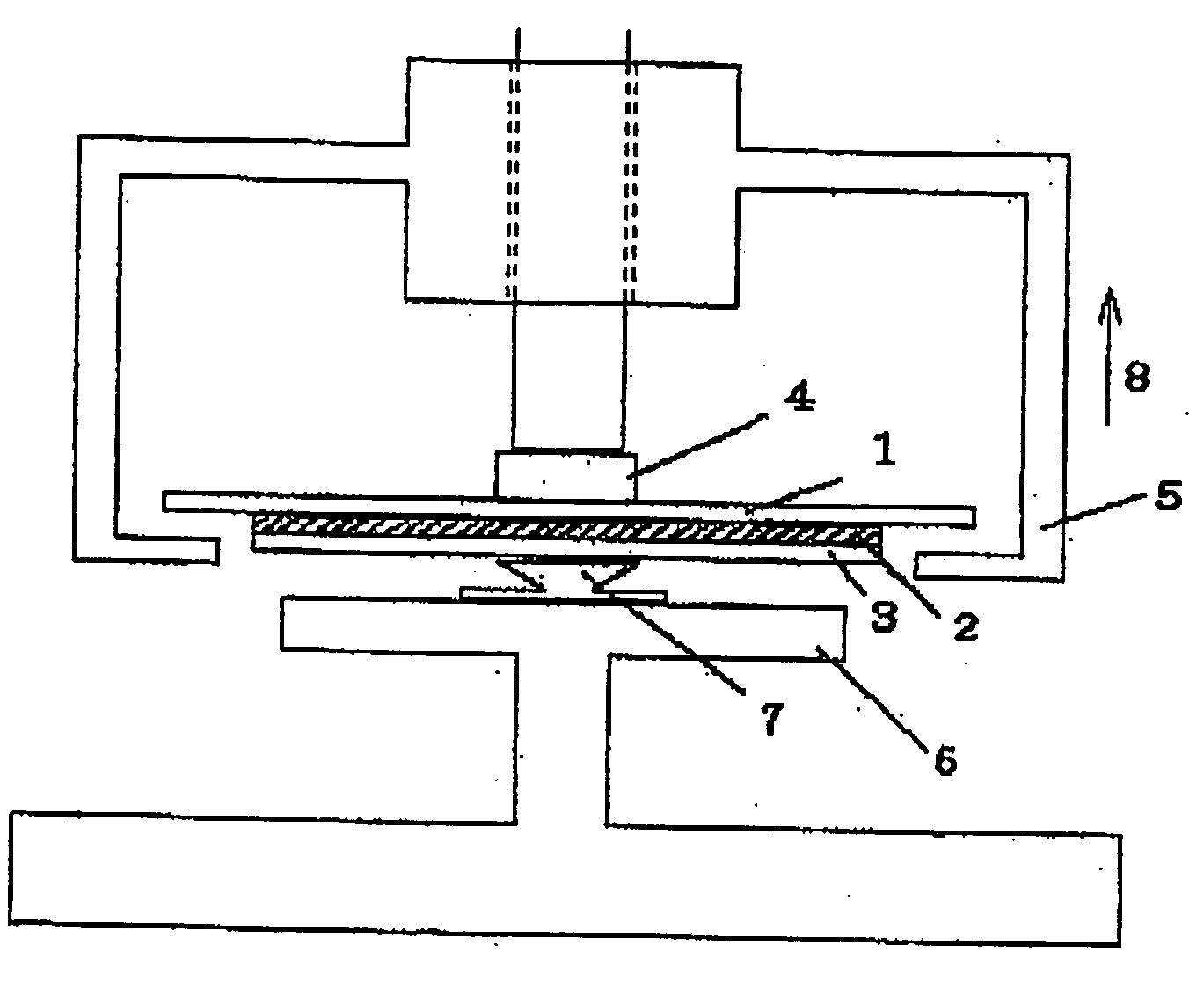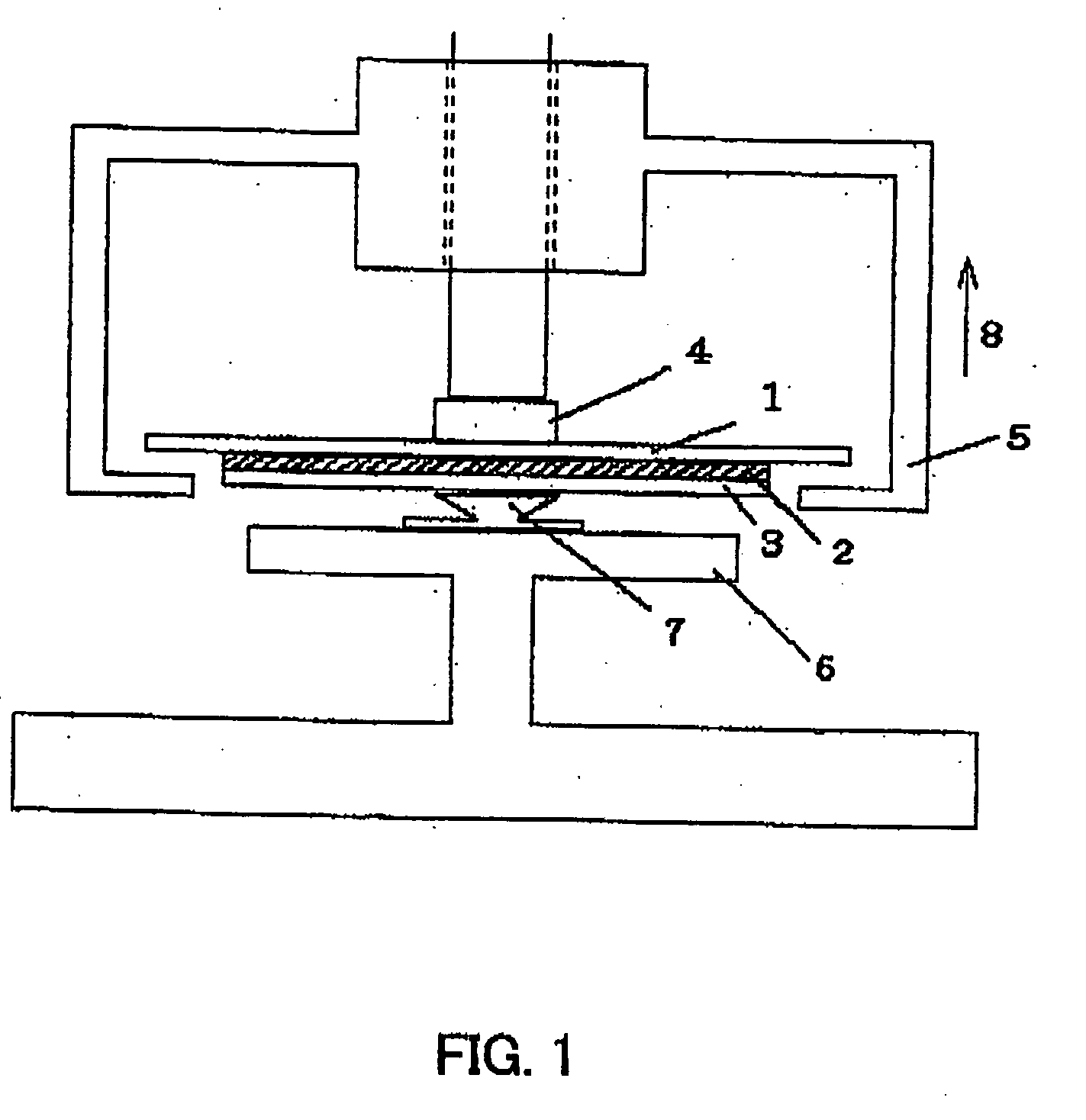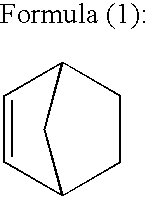Resin mold for molding curable resin and method of producing molded cured resin article
a technology of curable resin and resin mold, which is applied in the direction of ceramic shaping apparatus, manufacturing tools, coatings, etc., can solve the problems of difficult removal of resin articles, inability to replicate fine indentations or protrusions on the resin mold surface, and inability to smoothly eject molds, etc., to achieve enhanced selectivity. the effect of mold releas
- Summary
- Abstract
- Description
- Claims
- Application Information
AI Technical Summary
Benefits of technology
Problems solved by technology
Method used
Image
Examples
production example 1-0
[0138] In a nitrogen gas atmosphere, a reactor was charged at room temperature with 500 parts of dehydrated cyclohexane, 0.82 part of 1-hexene, 0.15 part of dibutyl ether and 0.30 part of triisobutylaluminum, and the content was stirred. While the content was maintained at 45° C., 170 parts of tricyclo-[4.3.0.12,5]deca-3,7-diene (trivial name: dicyclopentadiene; hereinafter abbreviated to “DCP”), 30 parts of 8-ethyl-tetracyclo[4.4.0.12,5.17,10]dodeca-3-ene (hereinafter abbreviated to “ETCD”), and 80 parts of tungsten hexachloride (in a 0.7% toluene solution) were added separately and at the same time in a continuous manner over a period of 2 hours, to conduct polymerization.
[0139] To the polymerization solution, 1.06 parts of butyl glycidyl ether and 0.52 part of isopropyl alcohol were added whereby the polymerization catalyst was deactivated to stop the polymerization reaction. Gas chromatography analysis of the thus-obtained polymerization solution containing a ring-opened polyme...
production example 2-0
[0142] To 100 parts by weight of pellet PM (hydrogenation product of ring-opened DCP / ETCD copolymer) obtained in Production Example 1-0, 0.2 part of soft polymer (“Tuftec H1052” available from Asahi Kasei Chemicals Co.) and 0.1 part of antioxidant (“Irganox 1010” available form Ciba-Geigy K. K.) were added, and the mixture was kneaded together by a twin-screw kneader (“TEM-35B” available from Toshiba Machine Co., Ltd.; screw diameter: 37 mm, L / D: 32) at a resin temperature of 100° C., a feed rate of 10 kg / hour and a screw revolution of 250 rpm. The kneaded mixture was extruded into a pellet (pellet P0).
[0143] The thus-obtained resin composition (pellet P0) had an MFR of 60 g / 10 min., and a tensile elongation of 120%.
production example 2-1
[0144] The procedures described in Production Example 2-0 were repeated to give a pellet P1 wherein, to 100 parts of the hydrogenation product of ring-opened DCP / ETCD copolymer obtained in Production Example 1-0, 5 parts of poly[{6-(1,1,3,3-tetramethylbutyl)amino-1,3,5-triazine-2,4-diyl)}{(2,2,6,6-tetramethyl-4-piperidyl)imino}hexamethylene{(2,2,6,6-tetramethyl-4-piperidyl)imino}] as a nitrogen-containing organic compound (X) was added in addition to the soft polymer and the antioxidant. All other conditions remained the same.
[0145] The thus-obtained resin composition (pellet P1) had an MFR of 104 g / 10 min. and a tensile elongation of 130%.
PUM
| Property | Measurement | Unit |
|---|---|---|
| Elongation | aaaaa | aaaaa |
| Elongation | aaaaa | aaaaa |
| Contact angle | aaaaa | aaaaa |
Abstract
Description
Claims
Application Information
 Login to View More
Login to View More - R&D
- Intellectual Property
- Life Sciences
- Materials
- Tech Scout
- Unparalleled Data Quality
- Higher Quality Content
- 60% Fewer Hallucinations
Browse by: Latest US Patents, China's latest patents, Technical Efficacy Thesaurus, Application Domain, Technology Topic, Popular Technical Reports.
© 2025 PatSnap. All rights reserved.Legal|Privacy policy|Modern Slavery Act Transparency Statement|Sitemap|About US| Contact US: help@patsnap.com



